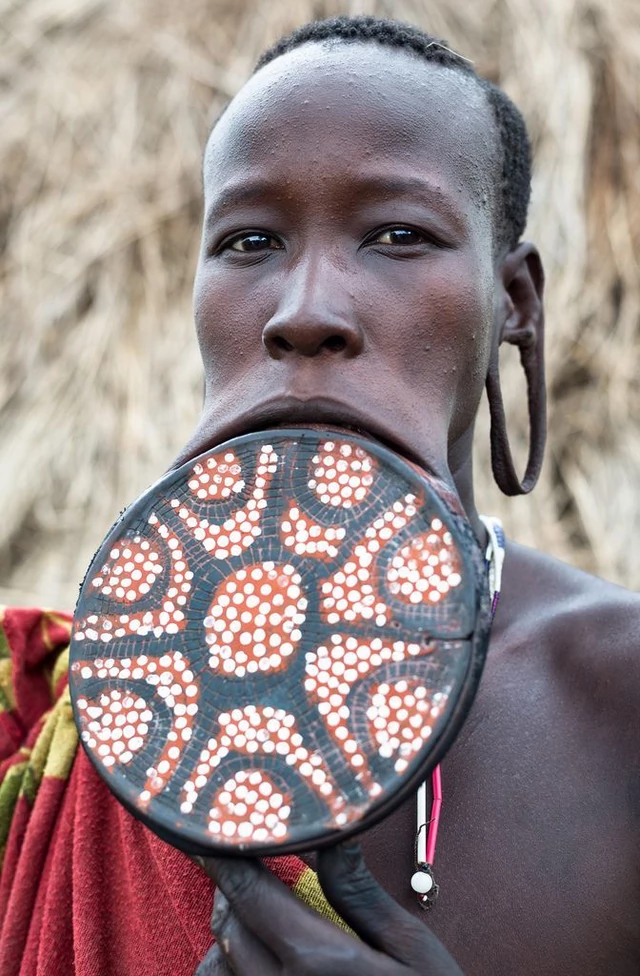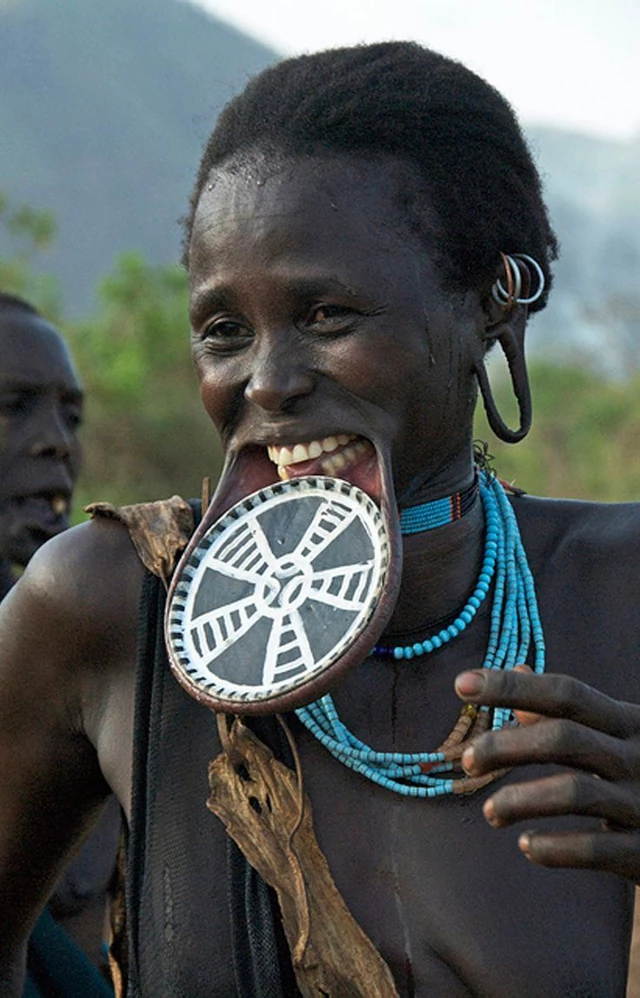Many body modifications have been used by Africans for centuries; many of these modifications have been forgotten or gone into extinction, while others still hold true today.
Although many may see these modifications as a form of body deformation, those who practice them, see them as a part of beauty.
Lip plating is a body modification common to many African tribes, especially women in Eritrea, Ethiopia, and Sudan. The lip plates or discs, as often called, are made out of clay or wood of about 5 cm and placed in the lower lip; about three to four teeth are removed to allow the disc to fit appropriately.

A girl who reaches puberty; is expected to have her first plate fixed. Her lower lip is cut by a female member of her family or tribe, usually the mother.
The level of stretch is dependent on the girl; over the years, she can decide to continue to stretch it out; and as such, larger plates are continually fixed till the lip can fit a disc of twelve centimeters.
A controversial belief about how lip plating became a thing is that the people of the community started this practice so that the women of the tribe may look ugly to foreigners who came into the land. Other meanings and beliefs have been attached to the wear of these lip plates.
Many believe that its wear symbolizes a young’s girl transition into womanhood. Others believe that wearing lip plates is a sign of a woman’s self-esteem and worth; the wider the lip plates, the more the bride price is received by the family.

Today, only a particular tribe in Ethiopia still practices this tradition; they are known as the Mursi tribe; It is surprising to see that amidst the civilization and globalization, this tribe has decided to carry on her tradition.
This makes the Mursi tribe a prominent tourist attraction, as photographers worldwide go to Ethiopia to capture their raw beauty.



